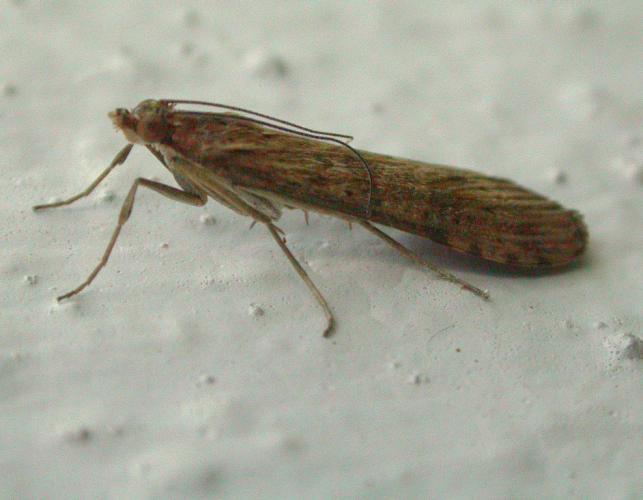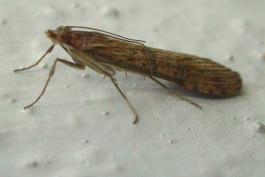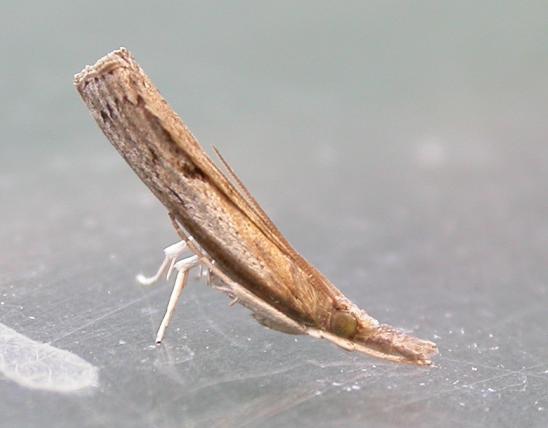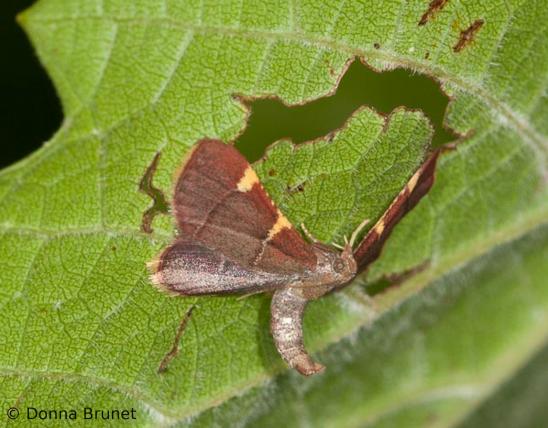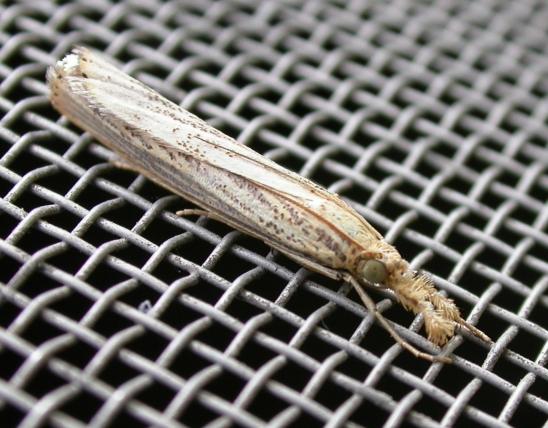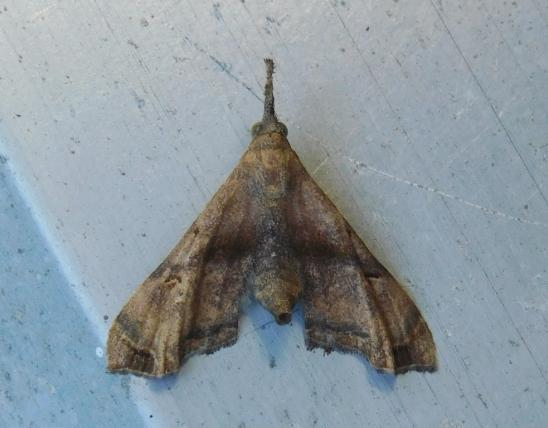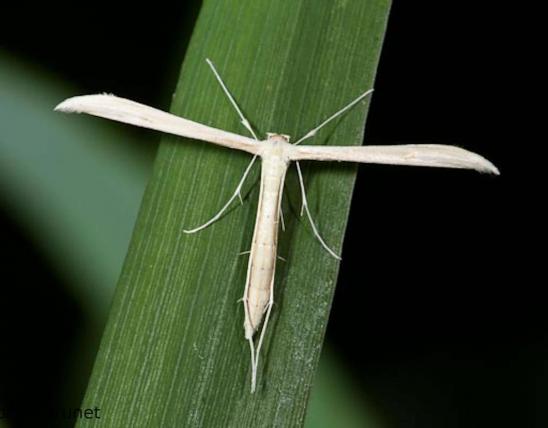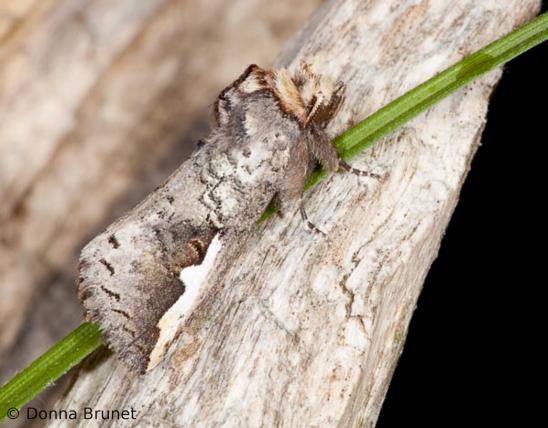
The lucerne moth is one of more than 860 species of crambid snout moths in North America. Like many other snout moths, they typically rest with wings folded narrowly against their sides. Coloration is brownish or grayish tan. Markings include two side-by-side darker oval spots in the middle of the forewing, plus a dark two-lobed spot slightly farther toward the tip.
Most people see adult lucerne moths at lights at night, or resting on buildings near places where lights had shone all evening. They may be seen in Missouri from April through the first freezes of October or November.
The caterpillars eat plants in the grass, celery, clover/alfalfa, and smartweed families.
Learn more about this and other crambid snout moths on their group page.
Habitat and Conservation
Like other plant-eating insects, this moth is most common in the places where its food plants thrive. In this case, a variety of herbaceous plants in the celery/parsley/carrot, grass, clover/bean, and smartweed families point to a habitat of fields, old pastures, roadsides, and other sunny, open areas with plenty of low vegetation.
Human Connections
The word "lucerne" sounds quite classy, but it is simply another name for good-old alfalfa (Medicago sativa).
Ecosystem Connections
Any insect that feeds on clovers, grasses, smartweeds, and/or members of the celery family (such as Queen Anne's lace, for example), has plenty to eat in Missouri. No wonder this is a common species. This and many other small moths are important links in the food chain between plants and the many animals that eat insects, including birds, toads, shrews, bats, and more.
